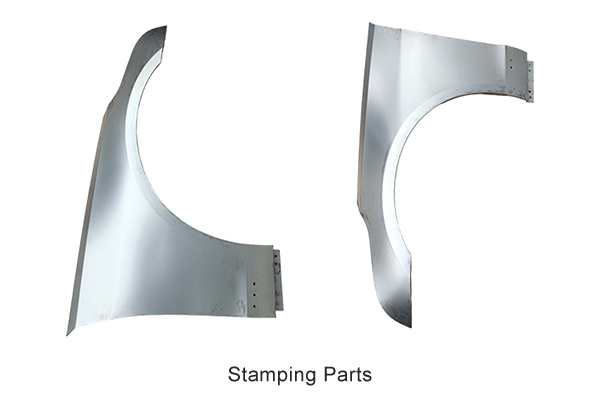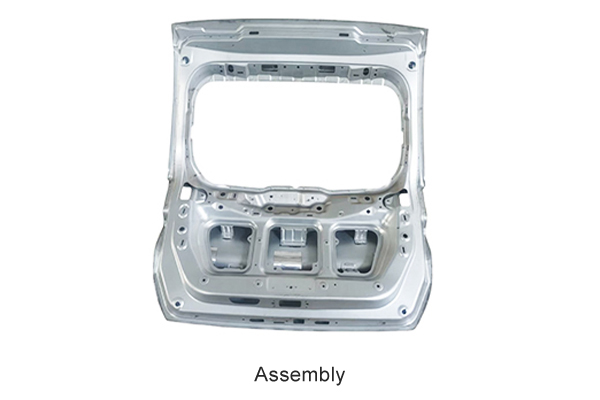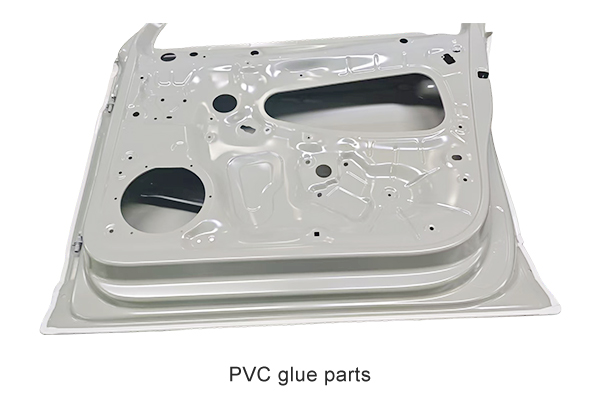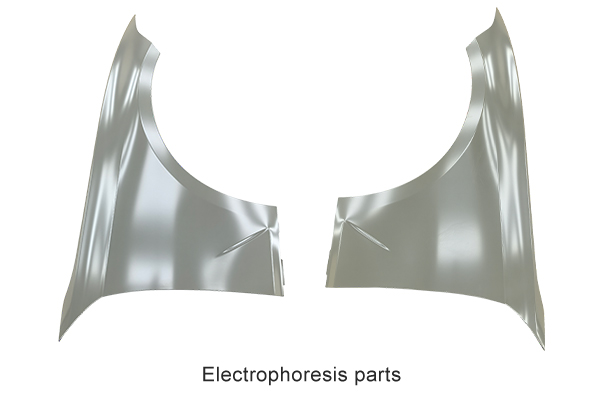How to choose efficient stamping parts production services to ensure product quality and cost-effectiveness?
Release Time : 2025-05-14
In modern manufacturing, stamping parts, as a basic and key component, play an important role in many industries such as automobiles, home appliances, and electronic equipment. The stamping process is efficient, precise, and economical by placing metal sheets between dies and applying pressure to form them into the desired shape. However, facing the numerous stamping parts production services providers on the market, how to choose a service provider that can ensure product quality and achieve cost-effectiveness has become an important issue facing enterprises. This article will explore this issue and introduce the key advantages of efficient stamping parts production services.
First of all, high precision is one of the core criteria for evaluating the quality of stamping parts production services. Advanced stamping equipment is equipped with precision control systems and high-quality dies, which can complete the processing tasks of complex shapes within a very small error range. This means that even for parts with extremely strict dimensional tolerances, such as engine components or tiny parts in electronic equipment, a near-perfect match can be achieved. Therefore, when choosing a stamping parts production services provider, you should focus on the technical parameters of the equipment used and its quality management system certification to ensure that it can meet your product design needs.
Secondly, efficiency is an important factor in measuring the competitiveness of stamping parts production services. The application of automated production lines has significantly improved the efficiency of stamping parts production. From automatic loading, multi-station continuous stamping to finished product inspection, the entire process requires almost no human intervention, greatly shortening the production cycle of a single part. In addition, with the advancement of computer-aided design (CAD) and computer-aided manufacturing (CAM) technology, it is now possible to directly import design drawings through software to automatically generate the optimal stamping path, further improving work efficiency. This not only helps to speed up the time to market, but also effectively reduces the manufacturing cost of each unit product.
Furthermore, material utilization is also an important aspect of considering stamping parts production services. Excellent stamping parts manufacturers are good at optimizing layout design and minimizing waste generation. For example, the use of advanced layout algorithms can reasonably layout multiple parts of different specifications on the same sheet, thereby improving the utilization rate of raw materials. This is especially important for companies that need to handle large quantities of metal sheets, because even a small percentage of material savings will translate into considerable cost savings in large-scale production.
It is worth noting that the impact on the environment during the production of stamping parts has also gradually received attention. Some leading stamping parts production services providers have taken a series of environmental protection measures, such as using more environmentally friendly lubricants, improving wastewater treatment systems, and implementing energy management systems. These measures not only help reduce environmental pollution, but also reflect the company's commitment to social responsibility, which is in line with the current development trend of green manufacturing.
In addition, flexibility and adaptability are key indicators for evaluating the capabilities of stamping parts production services providers. The market changes rapidly and customer needs are diverse, which requires stamping parts manufacturers to have the ability to respond quickly. Whether it is new product development or emergency order processing, a flexible and efficient supply chain system can help companies better cope with challenges. For example, some service providers provide a one-stop solution from small batch trial production to large-scale mass production. Customers can adjust production plans at any time according to market demand to avoid inventory backlog risks.
Finally, the quality of after-sales service directly affects customer satisfaction and the possibility of long-term cooperation. High-quality stamping parts production services providers usually provide comprehensive technical support and after-sales guarantees, including but not limited to product installation guidance, maintenance and repair suggestions, and troubleshooting services. Once a problem occurs, it can be solved in a timely and effective manner, reducing customers' worries. This all-round service experience helps to establish a good cooperative relationship and promote the common development of both parties.
In summary, when choosing suitable stamping parts production services, we should not only consider its basic production capabilities such as accuracy and efficiency, but also pay attention to the performance in terms of material utilization, environmental protection measures, flexibility and after-sales service. Only by comprehensively evaluating these factors can we find the most suitable partner for our needs, thereby ensuring a favorable position in the fierce market competition, achieving high-quality product output and maximizing economic benefits. Through reasonable cooperation and continuous improvement, enterprises can not only improve their own production capabilities, but also provide customers with more valuable products and services.
First of all, high precision is one of the core criteria for evaluating the quality of stamping parts production services. Advanced stamping equipment is equipped with precision control systems and high-quality dies, which can complete the processing tasks of complex shapes within a very small error range. This means that even for parts with extremely strict dimensional tolerances, such as engine components or tiny parts in electronic equipment, a near-perfect match can be achieved. Therefore, when choosing a stamping parts production services provider, you should focus on the technical parameters of the equipment used and its quality management system certification to ensure that it can meet your product design needs.
Secondly, efficiency is an important factor in measuring the competitiveness of stamping parts production services. The application of automated production lines has significantly improved the efficiency of stamping parts production. From automatic loading, multi-station continuous stamping to finished product inspection, the entire process requires almost no human intervention, greatly shortening the production cycle of a single part. In addition, with the advancement of computer-aided design (CAD) and computer-aided manufacturing (CAM) technology, it is now possible to directly import design drawings through software to automatically generate the optimal stamping path, further improving work efficiency. This not only helps to speed up the time to market, but also effectively reduces the manufacturing cost of each unit product.
Furthermore, material utilization is also an important aspect of considering stamping parts production services. Excellent stamping parts manufacturers are good at optimizing layout design and minimizing waste generation. For example, the use of advanced layout algorithms can reasonably layout multiple parts of different specifications on the same sheet, thereby improving the utilization rate of raw materials. This is especially important for companies that need to handle large quantities of metal sheets, because even a small percentage of material savings will translate into considerable cost savings in large-scale production.
It is worth noting that the impact on the environment during the production of stamping parts has also gradually received attention. Some leading stamping parts production services providers have taken a series of environmental protection measures, such as using more environmentally friendly lubricants, improving wastewater treatment systems, and implementing energy management systems. These measures not only help reduce environmental pollution, but also reflect the company's commitment to social responsibility, which is in line with the current development trend of green manufacturing.
In addition, flexibility and adaptability are key indicators for evaluating the capabilities of stamping parts production services providers. The market changes rapidly and customer needs are diverse, which requires stamping parts manufacturers to have the ability to respond quickly. Whether it is new product development or emergency order processing, a flexible and efficient supply chain system can help companies better cope with challenges. For example, some service providers provide a one-stop solution from small batch trial production to large-scale mass production. Customers can adjust production plans at any time according to market demand to avoid inventory backlog risks.
Finally, the quality of after-sales service directly affects customer satisfaction and the possibility of long-term cooperation. High-quality stamping parts production services providers usually provide comprehensive technical support and after-sales guarantees, including but not limited to product installation guidance, maintenance and repair suggestions, and troubleshooting services. Once a problem occurs, it can be solved in a timely and effective manner, reducing customers' worries. This all-round service experience helps to establish a good cooperative relationship and promote the common development of both parties.
In summary, when choosing suitable stamping parts production services, we should not only consider its basic production capabilities such as accuracy and efficiency, but also pay attention to the performance in terms of material utilization, environmental protection measures, flexibility and after-sales service. Only by comprehensively evaluating these factors can we find the most suitable partner for our needs, thereby ensuring a favorable position in the fierce market competition, achieving high-quality product output and maximizing economic benefits. Through reasonable cooperation and continuous improvement, enterprises can not only improve their own production capabilities, but also provide customers with more valuable products and services.








